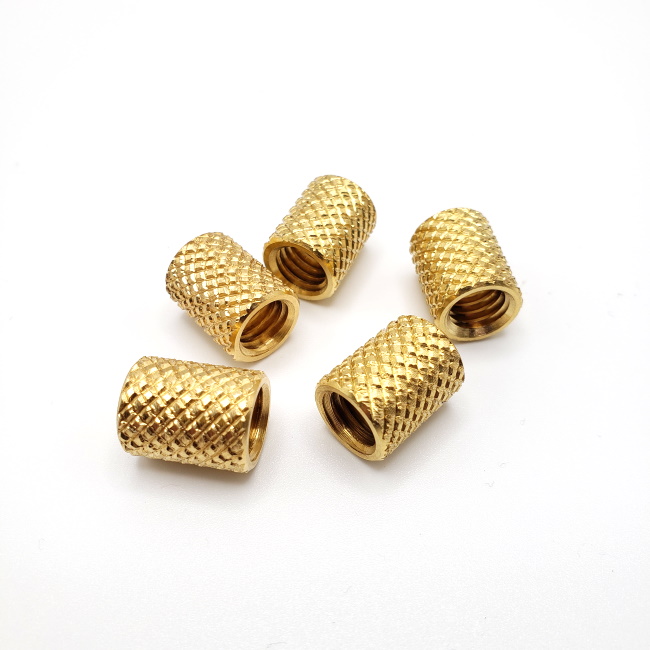You want to make sure the insert is straight!
Sort of - - -
Ultimately, the the concern is that the turned top of the stopper appear aligned with the base. The threaded insert serves both to receive the base, but also to mount the blank to the mandrel, so the axis of the insert will automatically align with both the axis of the mandrel and the axis of the base. That means that outer surface of the turning, and the axis of the base, are all referenced to the axis of the threaded insert.
The one potential problem is that if the axis of the insert isn't perpendicular with the bottom of the blank, it is possible for the blank to not seat properly on the mandrel, or for the base to not seat properly against the bottom of the turning. So the key is to make sure that the insert is perpendicular to the bottom of the turning (or more correctly, that the bottom of the turning is perpendicular to the axis of the insert).
So the critical step in the process is at the very beginning when the blank is drilled to receive the insert. This hole can be drilled off the lathe, but that introduces the possibility of misalignment. I prefer to mount the blank between centers, rough turn to a cylinder, and put a small mounting tenon on the 'top' end. Then, I grip the tenon in my scroll chuck, and face off the bottom. The bottom can be either flat or recessed - I prefer to do a recess so that if there is any a small gap between the base and the turning, it will be hidden inside the recess. I have made the recess using a forstner bit, but its easier and faster to do a concave recess using a spindle gouge.
Then,
leaving the blank mounted in the chuck, I use the tip of a skew to create an on-center dimple,, mount a drill bit in a jacobs chuck in the tailstock, and drill the hole for the insert. Hint: drilling this hole in steps, starting with a small bit and working up to the final diameter, helps prevent the drill bit from drifting off center. A forstner bit does a nice job, but twist drill bits are easier to use in end-grain. Then, after the threaded insert is in place, the blank is reversed onto a stopper mandrel and finished turned - but from that point on, the turning is all referenced to the axis of the threaded insert.



